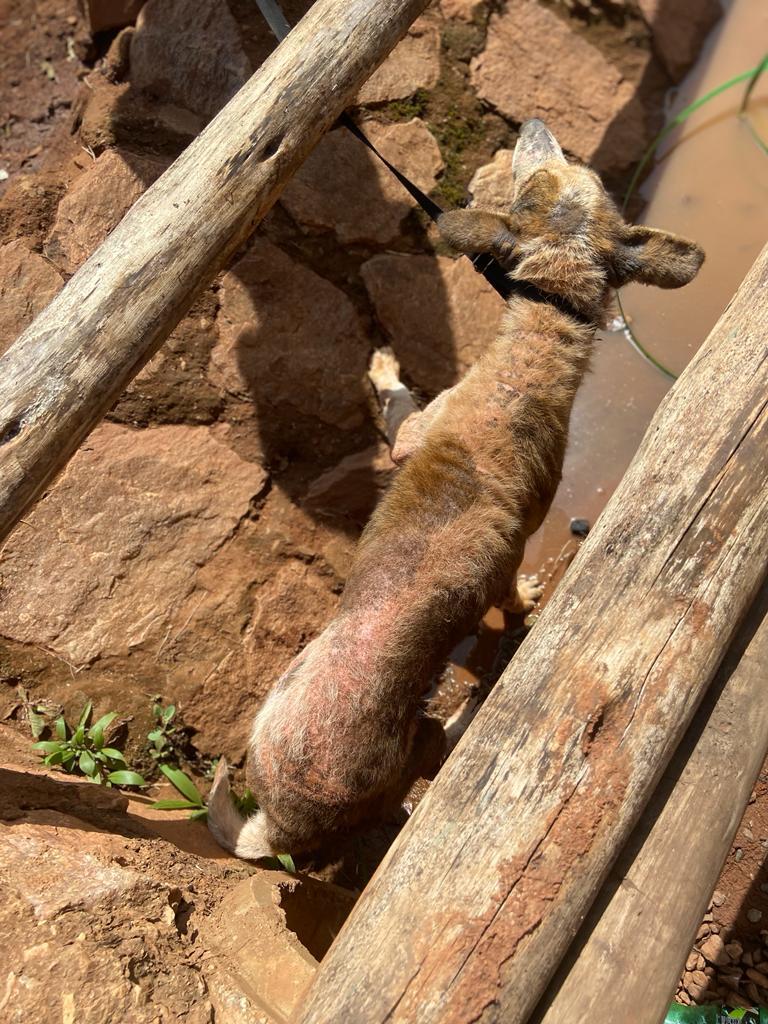
ALOPECIA OR EXCESSIVE HAIR LOSS IN DOGS
Causes, Symptoms, and Treatment for Excessive Hair Shedding in Dogs.
Hair loss in dogs: It’s normal for dogs to shed hair, but no skin layer is supposed to be visible in a previously covered body part.
Normal shedding or hair loss: the rate of hair loss is equal to the rate of hair replacement; therefore, no alopecic or bald skin patches should be seen. The body system is trying to replace old and damaged hair.
Types of normal shedding or hair loss in dogs:
Low shedders: they naturally lose less hair.
Heavy shedders: they naturally lose a lot of hair.
But in all situations, under no circumstances should alopecic or bald patches be seen.
Abnormal shedding or hair loss in dogs: in such cases, bald or alopecic patches of the skin are observed. The rate of hair loss is higher than the body’s ability to replace the lost hair. The body’s ability to replace lost hair is compromised by any underlying disease.
CAUSES OF HAIR LOSS OR ALOPECIA IN DOGS:
Infestation by ectoparasites, e.g., fleas, ticks, lice, and mites
Hypothyroidism
Bacterial or fungal infection
Allergic reactions
Over bathing
Excessive salt in the food
Stress
Poor quality of shampoo
Poor nutrition
Heavy worm burden
Genetics
Cushing disease
Chemotherapy
Old age
Autoimmune diseases
Poisons from mercury, iodine, and thallium
Mange
Pressure sores
Scar formation from a previous injury
Seasonal shedding due to changes in weather conditions
Continuous friction due to poorly adjusted collars and harnesses
Sex hormone imbalances
Skin cancers
Mineral deficiencies, e.g., copper and zinc
Seborrhea (excessive oil on the skin)
Symptoms of Hair Loss in Dogs
Bald patches or alopecic patches
Dandruff
Reddened skin
Itching
Uneven hair length
Thickened bald skin areas
Foul odor
Black or dark gray bald patches
Treatment for Hair Loss or Excessive Shedding in Dogs
First, identify the primary cause of hair loss to properly guide on the right treatment protocol.
The medications or management of hair loss include:
Proper feeding
Use shampoo recommended by your vet doctor.
Regular deworming
Anti-fungal
Antibiotics
Ectoparasiticides
Avoid over- or under-bathing.
Provide soft bedding.
Proper hygiene
Avoid inbreeding
Vitamin A, E, and Omega 3 supplements
Do not put a lot of salt in food (better to do no salt).
Anti-inflammatory drugs.
Anti-cytokine drugs.
Contact us call / WhatsApp +256771909946 for free consultations on the current state of your pet
Don’t forget to read the related posts below and share them with other responsible pet owners.
causes and treatment of hair loss in cats
Deworming schedule for puppies and adult dogs
What can I do to help my dog live longer?
Read about cataracts or cloudy eyes in cats
vaccination schedule for cats in Uganda
21 Questions to Ask Yourself Before Getting or Adopting a Dog
Read about the 5 killer diseases for dogs in Uganda
Vaccination schedule for dogs (puppies) in Uganda
Read about the causes and treatments of vomiting among dogs
Read about the cost of treating a dog in Uganda
Read about if humans can get parvo
Get know if teething can kill a puppy
Read about how puppies get parvo
Find the best treatment for parvo in dogs.
Read about the price of spaying a dog in Uganda
Read about the prices of vaccinating a dog in Uganda
Read about the price of parvo treatment in Uganda
Read about the treatment of intestinal adhesion in dogs.
Read about the causes and treatment of hernias in dogs.
Read about the causes and treatment of weight loss in dogs.
Read about the loss of hair in dogs.
Read about the causes and treatment of bad breath in cats.
Read about 10 simplified steps for grooming a pet.
Learn the 8 steps of trimming the nails of your dog.
Read the causes of scratching in dogs.
Read the causes and treatment of ear infections in dogs.
Read the causes, prevention, and treatment of bloat in dogs
Reab about the causes and treatments of curled toes in turkeys
Read about causes and treatment of cancers in dogs
Vaccination schedule for dogs (puppies) in Uganda
